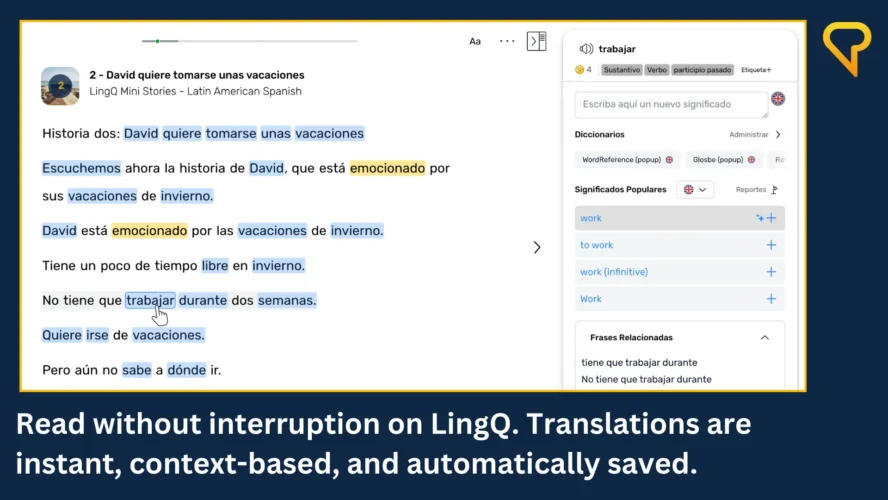Over the years, I’ve heard the same question over and over again: “Do we all learn languages the same way?”
The quick answer? Yes.
However, this is worth further explanation. In this post, I’ll share why I think we all learn languages the same way.
Our Brains Learn the Same Way
Just like we all digest food with the same biological system, our brains process language in fundamentally the same way. Sure, our preferences may differ—just like some people prefer pasta over fish—but the overall process is the same.
When learning a language, our brains acquire it in the same way. Through consistent reading, listening, we acquire new vocabulary and solidify a sense of intuition for the structure of the language. Some of us may love to read. Others can’t stand it. Regardless, successful language learners immerse themselves in the target language through lots and lots of input.
Learning Preferences ≠ Learning Styles
I often hear people say, “I’m a visual learner” or “I learn better through speaking.” Preference is not the same as a cognitive learning style. The idea of different learning styles—auditory, visual, kinesthetic—is a persistent myth in education. It sounds logical, but these claims are made without support from scientific studies.
In fact, when researchers actually tested this—by having people learn content in both their “preferred” and “non-preferred” styles—they found no difference in learning outcomes.
You might prefer listening to podcasts over reading books, and that’s valid. But it doesn’t mean your brain learns differently. In fact, confusing personal preference for cognitive ability can be quite limiting. For example, you may be too quick to disregard materials or refrain from challenging yourself as a learner
Input: The Only Way We Can Learn a Language
When we learn a new language, we’re not pulling it out of ourselves—we’re getting it from outside. That means input: listening and reading.
Ideally, we should be reading and listening. The more channels you use to experience the language, the better. You’ll reinforce vocabulary, connect sounds to spelling, and gain a richer understanding of how the language works. Whether you’re absorbing it through your ears or your eyes, the process in the brain is essentially the same.
Some people insist that they learn through speaking. However, when we speak, we’re drawing on language that we acquired previously through listening and reading. Furthermore, speaking can connect us to input—meaningful communication involves picking up new words and phrases from the people we talk to.
In short, input is the essential ingredient for every language learner. Our brains are wired to learn languages through reading and listening.
Your Learning Preferences Matter (But Don’t Let Them Limit You)
Preferences do matter. If someone doesn’t enjoy reading, pushing them to read won’t help. It makes sense to align your language learning habits with your preferences. Motivation is key. If you’re not enjoying the process, you won’t stick with it.
But still—don’t confuse preference with limitation. Saying, “I can’t learn through reading,” is just not true. Anyone can build the habit of consistent reading. Who knows? You might become a stronger reader and grow to enjoy it.
So yes, don’t subject yourself to methods that you know you won’t enjoy. But stay open to building new habits that serve your long-term learning.
Your Language Level Matters
How we learn also depends on where we are in the language. Language learning is an individual process, but the pathway is the same.
At the beginner stage, it’s nearly impossible to speak comfortably. You don’t have the vocabulary, so you end up repeating the same handful of words. That’s why early stages should focus heavily on listening and reading—to build up a mental library of the language.

At the intermediate level, it makes sense to increase speaking. You have more material in your brain to work with, and you can begin forming more complex thoughts and sentences. That’s when output becomes more meaningful and effective.
Final Thoughts
So yes—we all learn languages the same way: through meaningful input. Preferences matter for motivation, and our level in the language can shape what activities are most effective.
But the underlying process is the same.
Stay curious. Stay consistent. And most importantly, stay motivated.
Happy language learning!









comments on “Learning Styles vs. Learning Preferences”